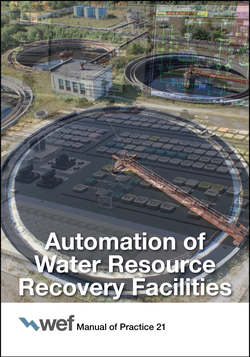Читать книгу Automation of Water Resource Recovery Facilities - Water Environment Federation - Страница 57
1.2 Predesign Phase
ОглавлениеThe predesign phase has a significant influence on the entire project and the design process itself, especially when the project is time-driven and involves significant subconsultants. The goals of this phase are for all stakeholders to agree on project objectives and the necessary steps to achieve them. Participation of utility engineers, project managers, client information technology staff, and facility operations and maintenance (O&M) staff (e.g., facility supervisors, chief operators, facility electricians, instrumentation and controls technicians, etc.) is critical because these groups will either be using the final product or be responsible for its maintenance.
During this phase, design team members should be chosen and the method for working together should be determined. Ideally, the design team should include the project manager(s), the owner’s representatives, representatives of all related engineering disciplines, and any significant subconsultants. This team will establish the project’s operation and control philosophies; design standards; and the architectural, civil, electrical, instrumentation, mechanical, and structural memoranda on which the design documents will be based. Automation design must be closely developed with process design because early decisions by the process team ultimately will affect it. This is also a great opportunity for process design to incorporate process dynamic behavior based on modeling, which, in turn, will allow automation design to accommodate this behavior in its design.
FIGURE 3.2 Ability to influence construction costs over time (Hendrickson and Au, 1989).
A project procurement strategy also should be established so owners can be confident that they are “getting what they paid for”. This strategy also helps determine the specification philosophy (the required design documents) because the documents required for a low-bid project are different than those needed for a design–build project. In addition, it is a good idea to include preliminary process control narratives (PCNs) identifying the general concepts without going into the details required for the PCNs needed for final design. Preliminary PCNs could then simply be a broad outline of the utility’s methods of operation.
During this phase, the design team should begin to address security issues. The team should start by reviewing standards and guidelines for supervisory control and data acquisition (SCADA) system security that have developed since the September 11, 2001, terrorist attacks in New York City and Washington, D.C. Security is of such importance to utility automation systems, including water and wastewater treatment, that a separate chapter (Chapter 12) has been dedicated to this topic.
At the end of this phase, the design team should write a predesign report that includes project objectives, necessary project steps, required design documents, standards for these documents, and, perhaps, some preliminary design documents (e.g., technical memorandum describing the proposed I&C system) and prepare a budget estimate based on available information and project scope. The owner should approve this report before the design team begins the next phase.
